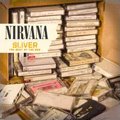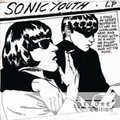
Rating: 5/10
Anyone familiar with the intricacies present in Bleach, Nirvana’s debut record, will tell you how different it sounds from the great rock n’ roll swindle that followed, Nevermind. Songs like "Floyd the Barber" and "Paper Cuts" seemed to surrender themselves to the slippery purgatory of college radio. At least, that’s what happened with Dinosaur Jr. and The Melvins.
To put a long story in a small paragraph, let’s just say that, a few years after formation, Nirvana inadvertently left their insurrectionary status as a band from Aberdeen, Washington, and toured the world. From transgressive art vandals, Nirvana became pop stars. In the end, Kurt Cobain took his own life and another rock mimesis act was accomplished. And after Nirvana, no band was ever capable of outdoing the legacy inherited.
I know it sounds terribly lame and everything in music (and art, for that matter) has to be put in some kind of perspective - and I do have a perspective, but choose the emotional one whenever Nirvana is the subject. But that doesn’t stop me from stating that nothing reverential has to be said about Sliver: The Best of the Box. As the title suggests, this release is a brief summary of last year’s much-balyhooed boxed set, With the Lights Out.
That, of course, and three previously unreleased tracks, but that is too weak of an argument to put an album out. Sure it’s always a delight to hear "Clean Up Before She Comes" or their cover of Leadbelly’s "Ain’t It a Shame", but it must be really frustrating for the diehard fan to purchase an album with 19 (out of 22) tracks that were released the year before. But mind you, that’s how the music industry works. Besides, Christmas is fast approaching.
What really sets the tone for a record that, otherwise, would sound merely revisionist (and, in a way, this surely is) is the first track. Unreleased before the Geffen marketing machine roared to life, aiming to put a hand or two in your wallet, "Spank Thru" is one hell of a track. Particularly because this is the version taken from the now mythical Fecal Matter demo tape, released in 1985 and featuring Cobain on guitar and vocals, and Dale Crover (of the mighty Melvins) on bass and drums.
The second reason why this makes any sense is "Sappy", a studio recording from 1990, which is a candelabrum of a song that documents Kurt Cobain’s love for the folksy side of music. This one here crosses his poppy voice with a bassline reminiscent of Motown. Ironically, this is the sort of music most fans of Nirvana’s more oblique side will have to grit their teeth to get through.
Finally, the pre-Nevermind, rougher version of "Come As You Are" included here lacks the rhythmic anchor of the more polished versions of the track. It doesn’t set things on a knife edge as most Nirvana tracks do. Besides, this is the kind of tune that deserved a less-abrupt ending, one that would serve as a proper instrumental postscript.
To really break it down for you, let me just say that if you haven’t bought With the Lights Out, don’t make the mistake of trying use this compilation as a surrogate. Save a few more bucks and get the real deal. If you are a devoted fan, you may want to consider getting this for the meager novelties it encloses but, at the end of the day, you will agree that Sliver: The Best of the Box is just a pair of sloppy brackets encapsulating ever more interesting takes, still hidden in the vault. This is clear for anyone who knows which end of a guitar goes through the amp.
http://www.lostatsea.net/review.phtml?id=927236035439e7038d0740

